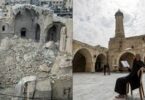F.P. Report
PESHAWAR: Being one of the oldest living cities of South Asia, Peshawar always bore strategic credentials due to its geographical location and a source of attraction for invaders to establish and strengthen their dynasties. With a history of over 2,500 years, the city was considered a gateway to the subcontinent and of pivotal importance for all kings, monarchs, warriors and invaders who ruled this region.
Therefore, these rulers constructed forts across the sub-continent as their power strongholds for the safety of their people and to safeguard them against external aggression including the mighty Balahisar Fort. Situated opposite Jinnah Park (old Cunningham Park) on main GT Road, Balahisar spreads over an area of 15.4 acres and is built of red bricks with 92 feet in height. It reminds the visitors of the rulers of various dynasties who stayed here before marching to the subcontinent to gain geopolitical strength and trade advantages from the rich lands of the subcontinent.
“In the past, most of the invaders and warriors including Afghans Muslim rulers, Mughals, Sikhs and British used to first conquer Balahisar fort before proceedings to Punjab and other parts of the subcontinent,” said Bakhtzada Khan, senior research officer, KP archaeology and museums department. “Recent excavations at Gor-Kathri Peshawar have ascertained city’s history dating back to 2,500 years,” he said.
“But, discussing this history was incomplete without mentioning the historic fort of Balahisar. It seemed to be as old as the city of Peshawar itself.”
The old main entrance of Balahisar directly faces the GT road that links Peshawar with Afghanistan and Central Asia on the west, and extends towards Pushkalavati (Charsadda) in the North and Hund and Taxila on the East. Several branches of the past Bara River used to flow through interior Peshawar with one among them probably near the Balahisar Fort.
Renowned historian, Dr A.H. Dani in his book “Peshawar-Historic City of Frontier (now Khyber Pakhtunkhwa)” wrote that when Hiuen Tsang, a Chinese traveller, had visited Peshawar in 630 AD, he spoke of a “royal residence” i.e Balahisar. According to Dr Dani, a channel of old Bara River surrounded by a high spot perhaps comprised Balahisar and Inder Shahr and the present elevated Balahisar could have been the citadel.
The Chinese word “Kung Shing” is used for its significance and is explained as the fortified or walled portion of a town where the royal palaces used to be situated. This shows that the royal residence formed the nucleus of a Citadel, which must have been further protected by a moat. In 11th century AD, Raja Jaipal, a ruler of the Hindushahi dynasty was defeated in Peshawar’s vicinity and commander Mehmud Ghaznavi had garrisoned the fort with his army. “There were different opinions about the origin of the fort but mostly Mughals were believed to be the architects of present Balahisar,” Bakhtzada said.
According to renowned historian Abul Fazl, Balahisar was redesigned and built by Mughal emperor Zaheeruddin Babar in 1526. However, after overthrowing emperor Humayun by Shershah Suri, the Afghans destroyed the fort. “When he was staying in it, Hamyun decided to rebuild the fort to use it for his conquest of India at a later stage and himself supervised its rebuilding,” he said. Balahisar was also used by Hari Singh Nalwa as a royal residence for Maharaja Ranjeet Singh during Sikh rule.
“The Afghan Durrani rulers used it as their winter camp in early 19th century and named it “Balahisar” a Persian name, meaning high fort,” Bakhtzada said. “Later on, Sikhs renamed it as Samargarh in 1834 but the name remained unpopular.”
Balahisar remained a key settlement for successive rulers and witnessed the rules of Hindu Maharajas, Ghauris, Ghazanvis, Tughlaqs, Mughals and Sikhs. The fort also remained the residence of the Afghan king, Ahmed Shah Durrani and his son Taimur Shah Durrani.
However, after death of the latter in 1793 AD, the Durrani rule weakened and Sikhs captured Peshawar and Balahisar in 1834 after the battle of Nowshera. Firstly, the Sikhs destroyed a major portion of the fort but later regretted it and Sher Singh, on orders of his father Ranjeet Singh, erected the fort with unbaked bricks.
On entrance of the main courtyard of Balahisar, a Sikh period inscription can be seen at the arch gate. This is the only inscription available today in Balahisar, which reads, “Victory to Porak. This was built by Raja Bikramajit and was named Samir or Samar Garh.” At the time of Sikh Shahi annexation to British rulers in 1849, Balahisar had mud walls.
The British replaced its structure with red bricks in its present shape and kept troops in Balahisar till the cantonment was laid out in Peshawar. “When the Afridi tribesmen launched a massive attack on Peshawar city in 1930 in a bid to overthrow colonial rulers, the fire of British artillery dispersed them from Balahisar,” Bakhzada said. The architectural wonder has always been the centre of attraction for local and foreign tourists and visiting dignitaries presenting a rare view of its huge battlements and architectural designs. Balahisar also has an honour of hoisting the national flag on August 14, 1947 and later served as Frontier Corps (FC) headquarters.(APP)







